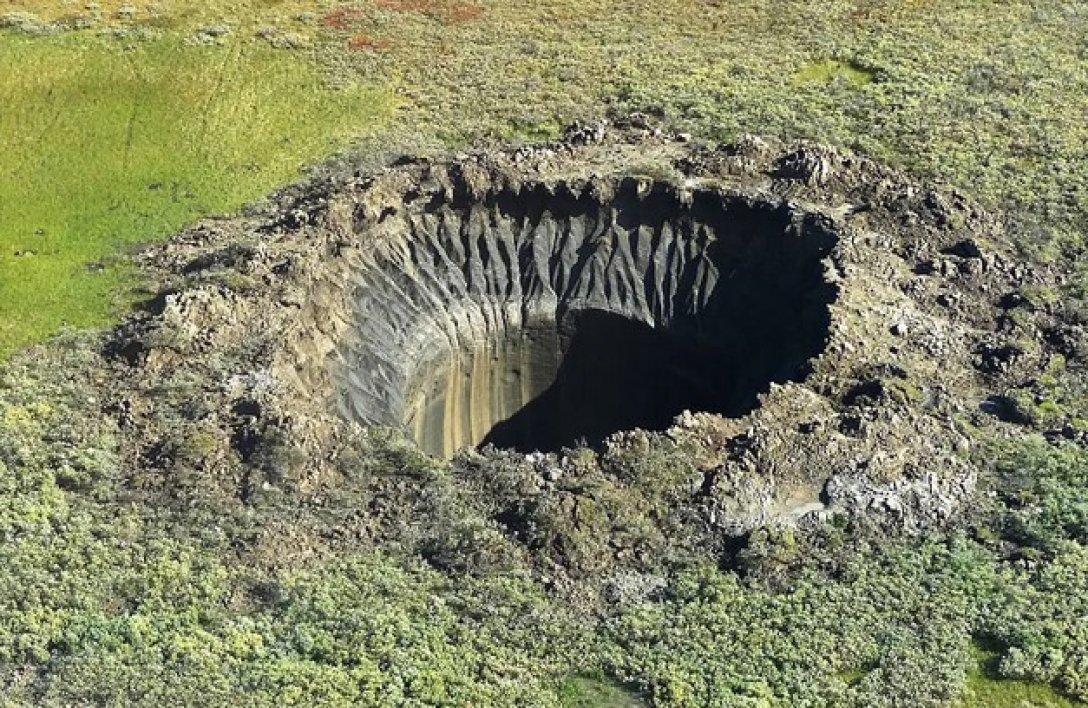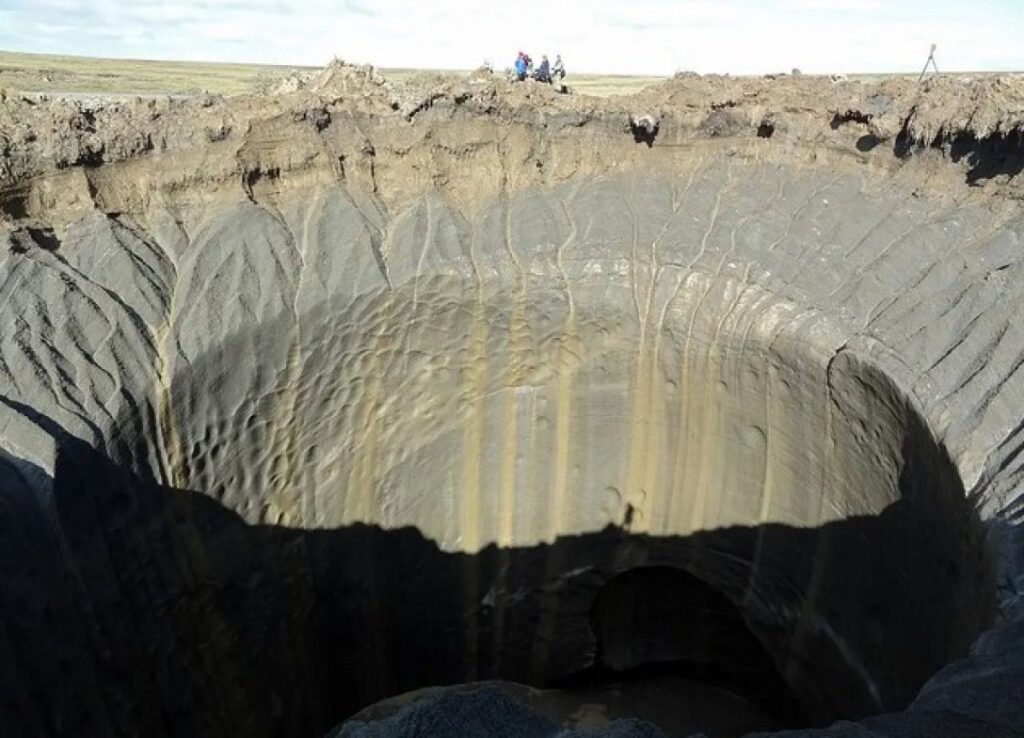
Scientists explain the nature of mysterious giant craters in Siberia, formed by powerful underground explosions (photo)
First discovered in the permafrost of Siberia in 2012, the huge craters are more than 50 meters deep and more than 20 meters wide. These craters continue to appear in this region of the Earth and have puzzled scientists for many years.
The authors of the study, published on the EarthArXiv preprint server, propose a new explanation for the appearance of these craters, ScienceAlert writes.
To date, scientists have already discovered 8 huge craters in the north of Western Siberia, namely on the Yamal Peninsula and the Gydan Peninsula. They are caused by an extremely powerful explosion that can be heard at a distance of more than 100 km. In this case, the explosion throws up a lot of debris from underground, which scatters hundreds of meters around.
The authors of the study believe that the cause of the exploding craters may be deposits of hot natural gas seeping from the Earth’s interior.

Permafrost contains a lot of organic material that melts and decomposes as the temperature rises. As a result, methane can be released. Therefore, scientists have suggested that methane seeping from permafrost is behind the appearance of craters.
It is believed that such processes result in the formation of methane lakes in permafrost regions. But this does not explain why the craters that explode like this are located only on two peninsulas, because lakes of methane can be found wherever there is melting permafrost.
In view of this, the authors of the new study believe that hot natural gas is behind the appearance of craters, which escapes through a geological fault, accumulates under the frozen soil layer and heats the permafrost below.

This is how permafrost melts, and it becomes weakened from below and can collapse. The upper layer of permafrost also melts due to rising temperatures, creating all the conditions for a sudden release of gas. This is how an explosion occurs and a crater is formed, scientists believe. The authors of the study believe that more such craters could have appeared, but then disappeared, as indicated by the large number of depressions in northern Siberia.
At the same time, other scholars believe that more evidence is needed to support this theory. But if it turns out to be true, it could cause problems for the climate. Natural gas contains a lot of methane, which is a powerful greenhouse gas. Therefore, craters can be a place where large amounts of methane are released into the atmosphere in a short time.
The authors of the study say that if such craters appear only in a certain region of the Earth, the impact on the climate on a global scale will be negligible. Although there is a lot of methane underground, it is not known how much of this gas can come out.

